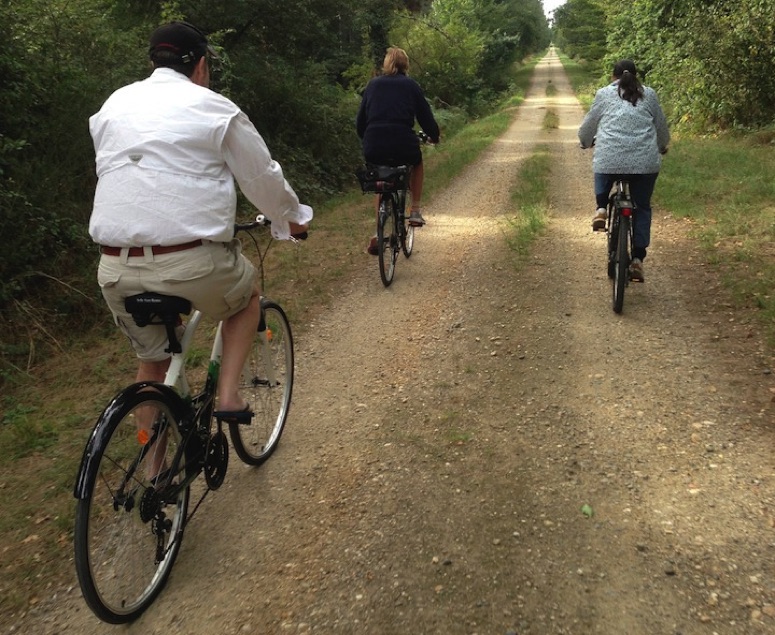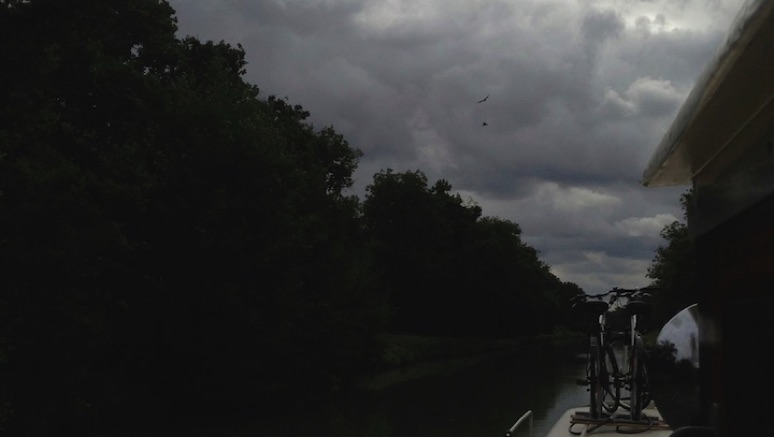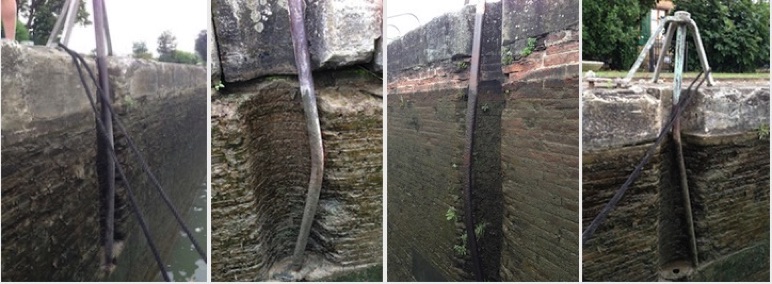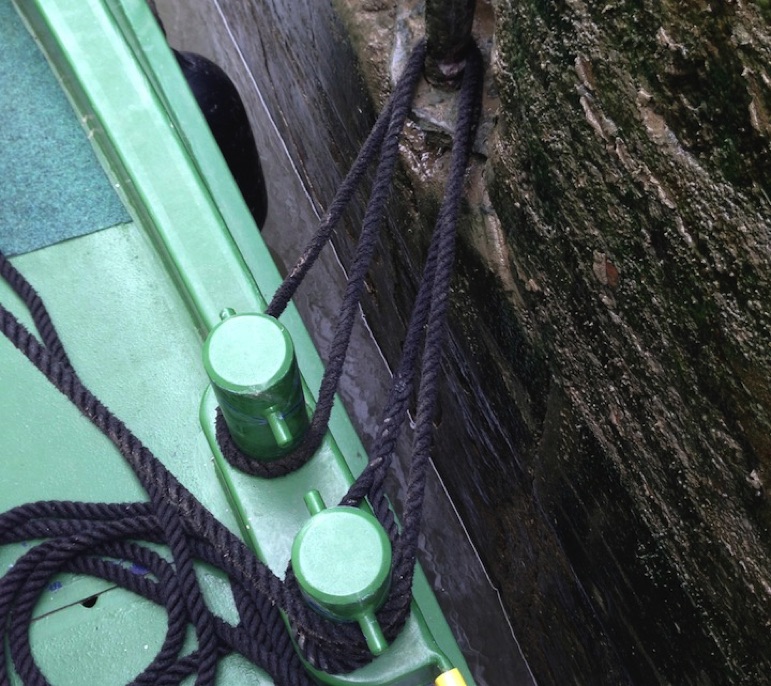
Thursday 12 September - bike ride, distraction, lock problems, St Jory
Since we were so close to the Foret deAgre, we decided to all go for an early morning bike ride though the forest - great way to start the day.

Around 9.30am, we then headed south on Kanumbra, eventually reaching Lamothe for lunch. We had heard that the canal south of Montech was not very attractive, but the run to Lamothe was very pleasant, through forest and rural countryside, with raptors circling overhead (even if the weather wasn't the greatest).

I allowed Peter to steer Kanumbra, just so that he could compare it with ZeeOtter, which was a much older barge with no bow thruster (although this was not needed when cruising down the canal). I learned the hard way of one of the issues in cruising with guests. Normally, I am alone in the wheelhouse and can concentrate fully on the job. With other people on board, the natural tendency is to engage in conversation. And it was during one of these conversations, when I was thinking of an answer to a question that had been posed, that I made a beginner's mistake when going under an offset bridge (with a towpath on only one side). In such a situation, the highest point of the bridge's arch is not in the middle of the water under the bridge. Normally, you concentrate on both these clues as to where to position the barge, since going though the centre of the water can sometimes lead you too far under the sloping part of the bridge arch on the other side, with the potential to clipping the wheelhouse roof or bimini on the underside of the bridge (as we did at Fontet last year). This time, however, I was concentrating too much on the bridge arch, and whacked the right side of the bow on the stone towpath which projected out into the right side of the canal. This pushed the bow across to the left of the canal and we just missed hitting the left side of the barge on the stonework on the left of the bridge! Luckily, steel barges are relatively strong, and so even though the collision sounded nasty, no major damage was caused to the hull, apart from a bit of paintwork damage on the lower hull. Luckily, we intend to get all that repainted at the end of next season. But it was a good lesson not to be distracted while steering the boat.
As we cruised further, we got our first indication of the poor state of maintenance of this section of the Garonne canal, as we approached a road bridge over the canal. An electrical cable in a plastic conduit was sagging dangerously low below the bridge in the middle of the canal. We approached very slowly and steered to the far left, and managed to sneak through without incident, but the potential for disaster was evident, especially for someone coming the other way, where the sagging cable was not nearly as visible.

As we went though several of the following locks, their state of repair was clearly deficient, as evidenced by the following photos of sliders at several of the locks, with the one on the right being perhaps the worst, being both bent and not even attached at the base!

One thing we learned from Judy while locking with sliders was a different way of attaching the ropes. Previously, we had just taken the eye off the boat bollard, passed it round the back of the slider, then slipped it back over the bollard and held the other end of the rope around the second bollard (or bit, as they are sometimes called). However, Judy leaves the eye on the bollard, and takes a loop of rope around the back of the slider and drops it over the second bollard, holding the end of the rope above the eye on the first bollard, as shown below. This is just as quick as the first method, but has the advantage of halving the effort needed to hold the rope by having two ropes going around the slider (thus doubling the mechanical efficiency), in much the same way as the "hallelujah" method has two ropes instead of just one if the onshore bollard has been lassoed with the eye.

We moored for the night at St Jory, which is just north of the beginning of the Toulouse industrial outskirts.